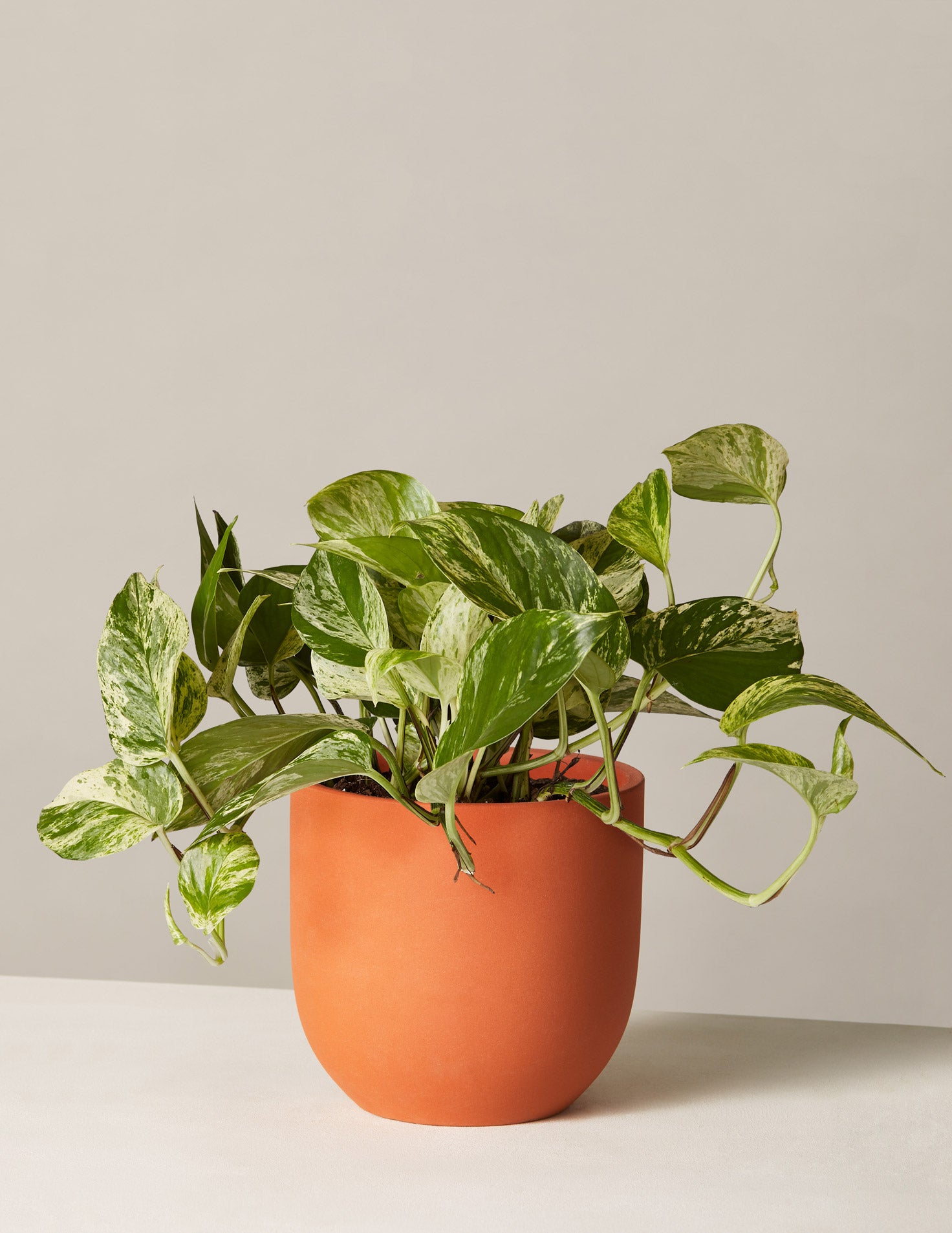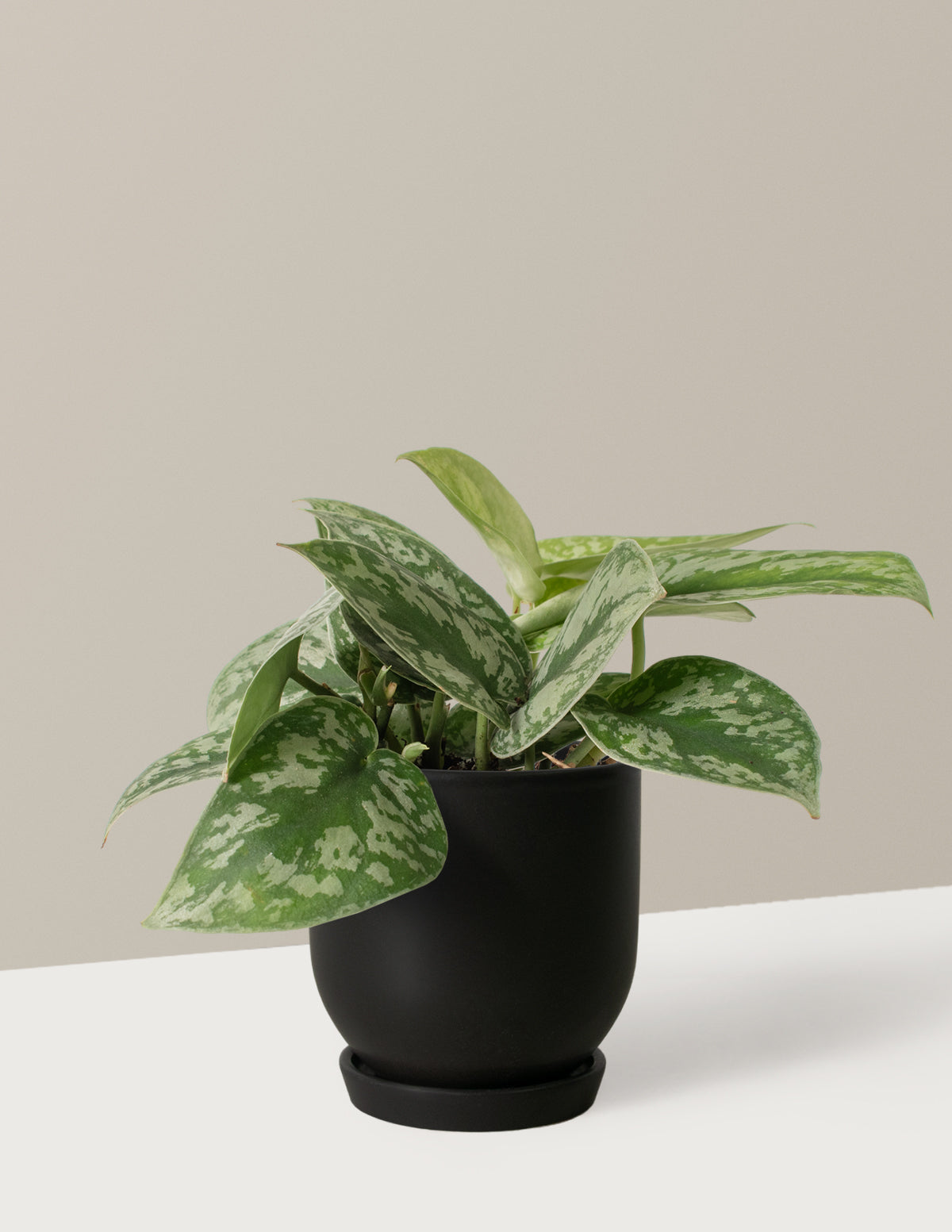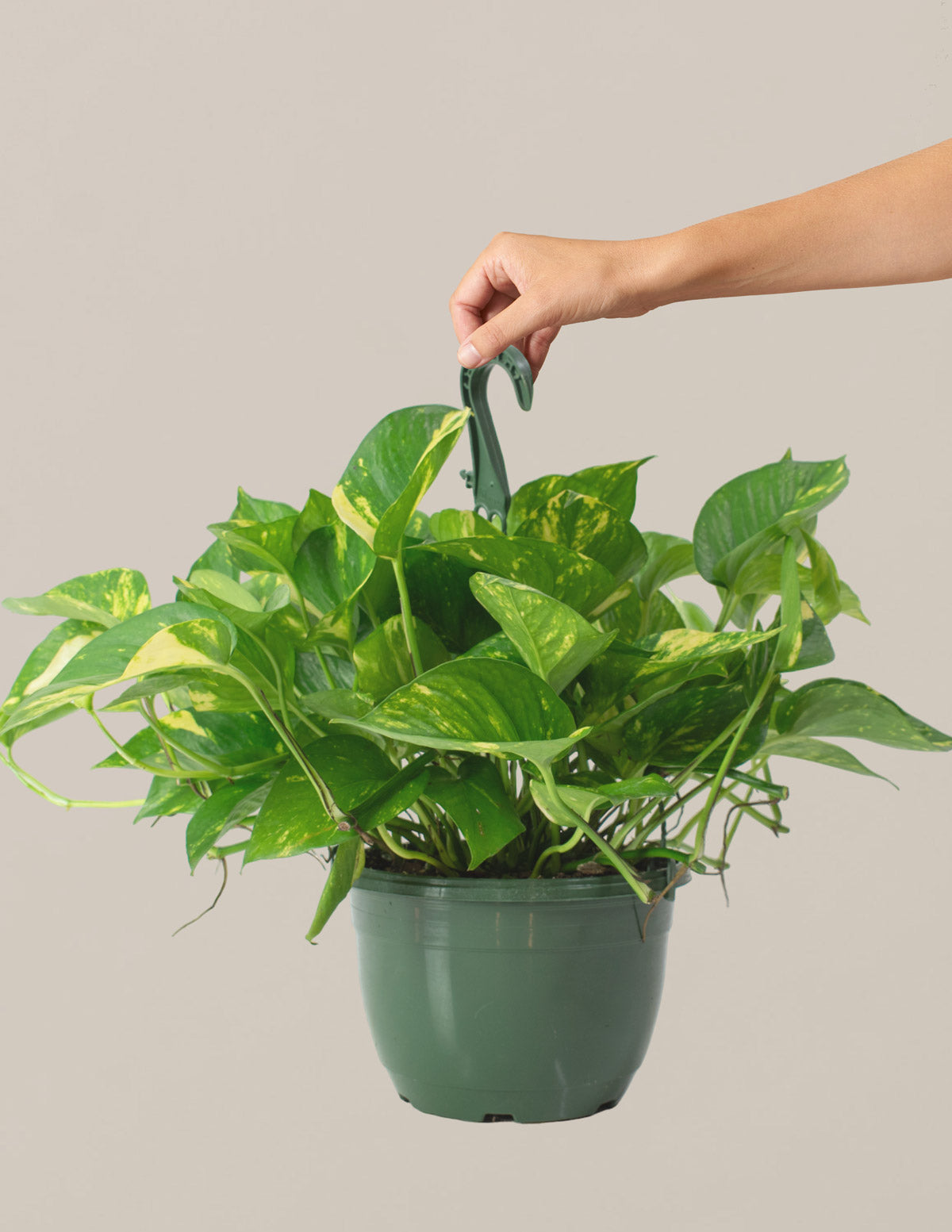Best pothos varieties – 7 choices for a unique trailing houseplant
These versatile, patterned indoor plants will bring variegation galore to your home


With an endless number of varieties, it's possible to keep collecting pothos plants forever. These popular trailers are loved for their variegation and climbing habit, often styled to cascade from hanging baskets or down a bookshelf
If you're interested in adding a pothos plant to your houseplant collection, but are overwhelmed by the wide choice of these variegated indoor plants, then look no further. Whether you're after a classic golden pothos or want one with a more unique pattern, there's a pothos for every home.
Here, we've compiled the very best pothos varieties available. Plus, experts have shared their top tips for properly caring for these beauties, so they can thrive happily.

7 striking pothos varieties
Pothos plants are among the list of houseplants with aerial roots, alongside monsteras and orchids. This means they can be grown on a houseplant trellis or moss pole, as well as displayed in a hanging basket. Discover our top picks to showcase in your home below.
1. Manjula Pothos
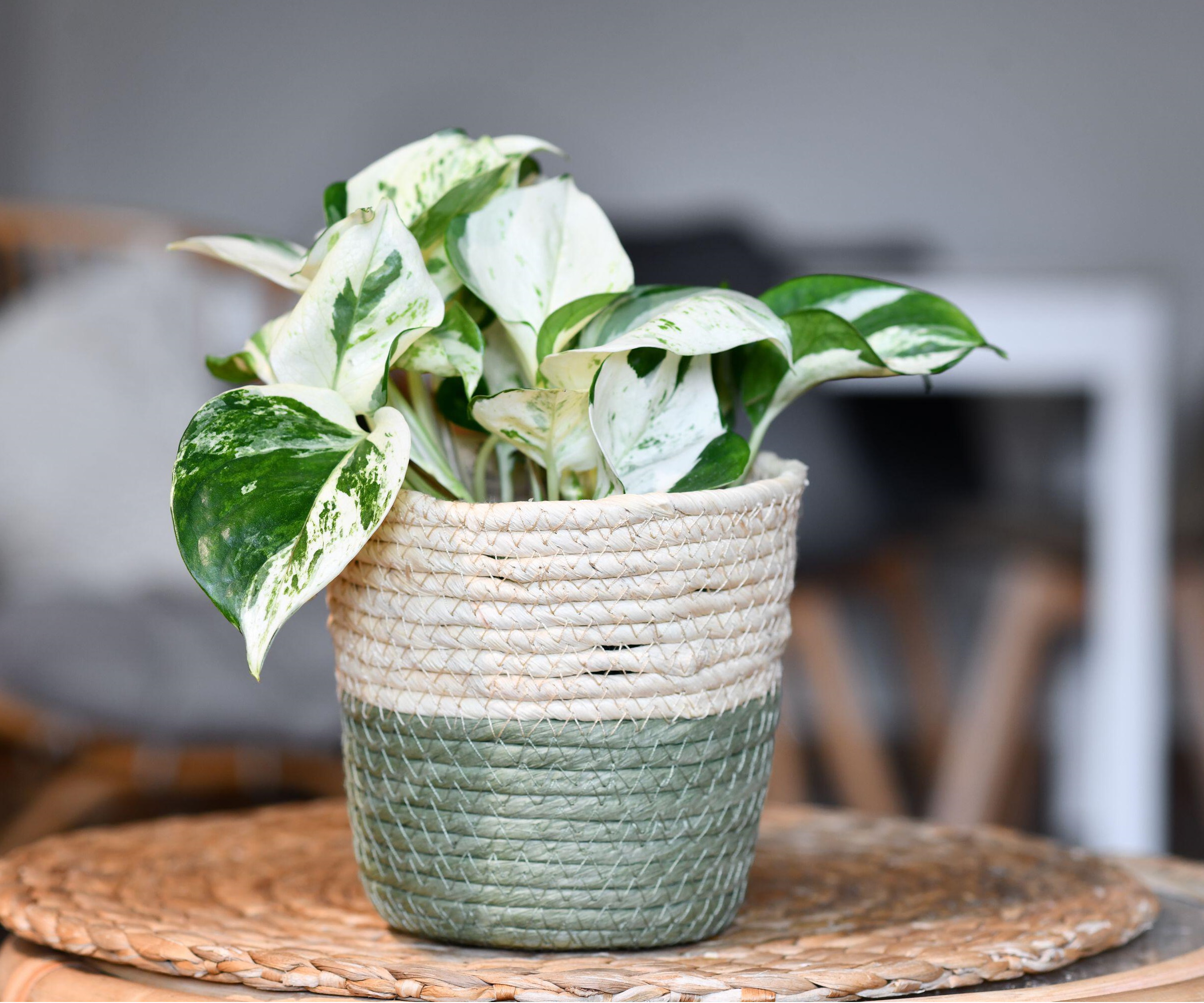
A lesser known variety, but just as impressive as the classics, manjula pothos is a unique indoor plant bred to look as though its foliage has been painted white. Its funky foliage has even earned it another common name of the 'Happy Leaf' pothos.
Although it is toxic and not among pet-safe indoor plants, these statement houseplants are a great choice for those looking for a low-maintenance indoor plant. So long as they're growing in well-draining soil that is never left to dry out, your manjula pothos can grow as long as 10ft.
It's key to give your manjula pothos plenty of bright, indirect light to maintain its white variegation. Too little light could see the colors fade, while exposure to direct sunlight may cause leaf scorch.
Design expertise in your inbox – from inspiring decorating ideas and beautiful celebrity homes to practical gardening advice and shopping round-ups.
Shop for a manjula pothos at Walmart.
2. Marble Queen Pothos
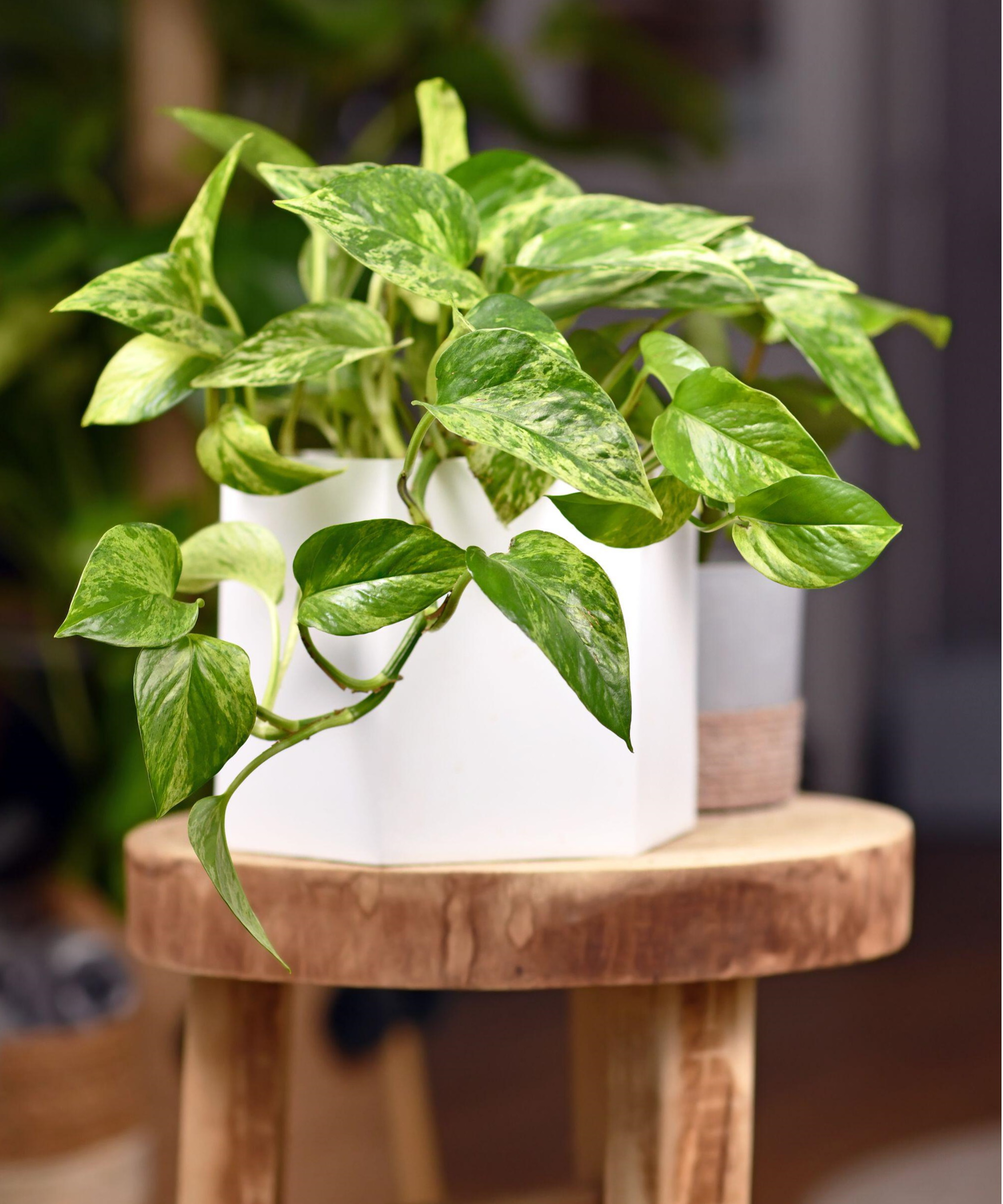
We're sure you've heard of the marble queen pothos, loved for its intricate cream and green patterns. This is one of the most popular types of pothos varieties, and it's not hard to see why.
They're easy indoor plants native to the Solomon Islands and can be grown as trailers. Alternatively, you can prune your pothos to keep it compact in its pot. If you do choose to cut it back, use your cuttings to propagate your pothos.
'This elegant plant is highly variegated and requires plenty of bright, indirect light for stable and strong variegation,' says Vladan Nikolic from Mr. Houseplant. 'It’s a versatile and hardy plant that can embellish both workspaces and homes,' he adds.
Marble queen pothos is also among the best feng shui plants, so it's a good choice if you're looking for houseplants to uplift your interiors.

Vladan Nikolic is a houseplant expert with over 10 years of experience. He is the founder of the houseplant care blog Mr. Houseplant and is a social media influencer for houseplants with over 500,000 followers.
3. Neon Pothos

For a non-variegated option that still wows, opt for the vibrant neon pothos. There's no confusion as to why this pothos makes the list for the best lime green houseplants, as its bright foliage instantly catches your eye as you walk in a room.
'Neon pothos lives up to its name with its chartreuse leaves that light up the indoor garden,' says Julie Bawden-Davis, indoor plant expert at Healthy Houseplants. 'In certain lighting conditions, this variety seems to glow like a neon light,' she adds.
Just like marble queen, the neon pothos is native to the Solomon Islands. It's best to keep it in indirect light to avoid sun damage to its sensitive leaves. In fact, this type of pothos can even do well as an indoor low light plant. They also thrive in acidic soil, so consider an acidic potting mix, like this from Amazon.
These beauties can grow as long as five feet, making it an ideal choice for smaller spaces. Make sure to water your neon pothos when around 50% of its soil is dry - too little or too much watering can cause this pothos to turn yellow.

Julie Bawden-Davis is a garden author and University of California Certified Master Gardener, who has written several gardening books, including Indoor Gardening The Organic Way. In addition to running HealthyHouseplants.com, she shares indoor gardening advice on her YouTube channel @HealthyHouseplants.
4. Snow Queen Pothos

Also native to the Solomon Islands, the snow queen pothos is differentiated to the marble queen pothos by its whiter variegation.
'With its creamy white leaves accented by splotches of green, this pothos is one of few plants with nearly all-white leaves,' says Julie.
It needs very similar care to a marble queen pothos, too; plenty of bright, indirect light to maintain its variegation, well-draining soil and consistent moisture levels. Using this soil moisture meter from Amazon can help you identify when to water your plants and prevent your pothos wilting from a lack of moisture.
Prune this pothos to keep it at a desired length, but make sure not to cut away more than a third of the plant at a time to prevent it going into shock.
Snow queen pothos is available to purchase at Walmart.
5. Satin Pothos
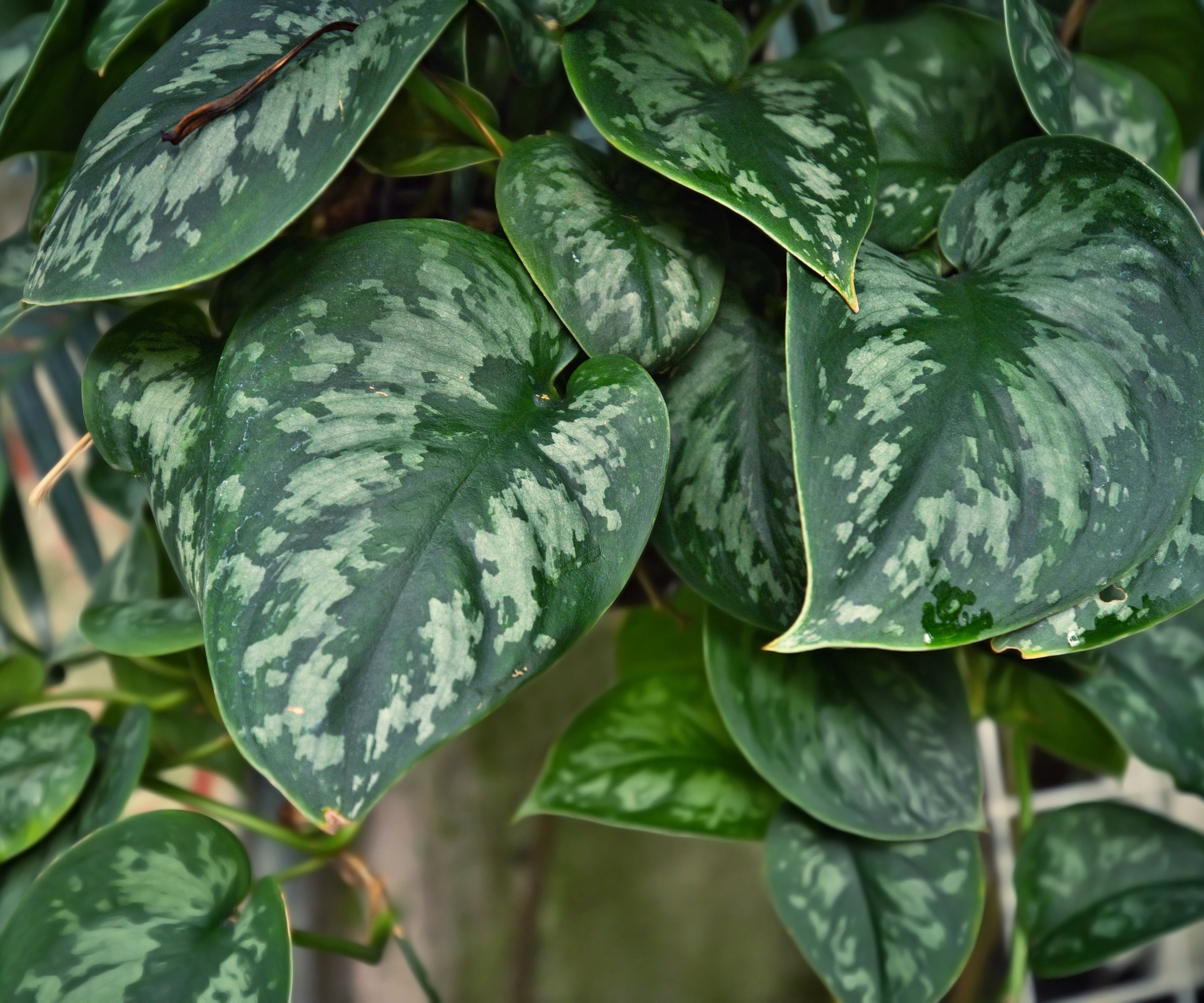
This pothos is often responsible for the philodrendron or pothos debate, as its soft-textured leaves look very similar to those of philodendron houseplants. Duller in color than other varieties of pothos, these charming houseplants are perfect for adding sophistication to an indoor space.
'Satin pothos, botanically known as Scindapsus pictus, while not a true pothos, looks like one, as it has the same shape of leaves, similar growth habit, and is also easy to grow,' explains Julie.
It boasts the classic heart-shaped leaves of other pothos plants, elevated by its velvety texture and silver variegation. Whether you train it to climb a trellis or let it spill out of a pot, there's no doubt this houseplant will bring a feeling of luxury to your indoor space.
These plants are native to tropical regions of Asia and do best out of direct sunlight, while a lack of light will cause their subtle variegation to fade. It can also benefit from fertilizing during its active growth season.
6. Golden Pothos
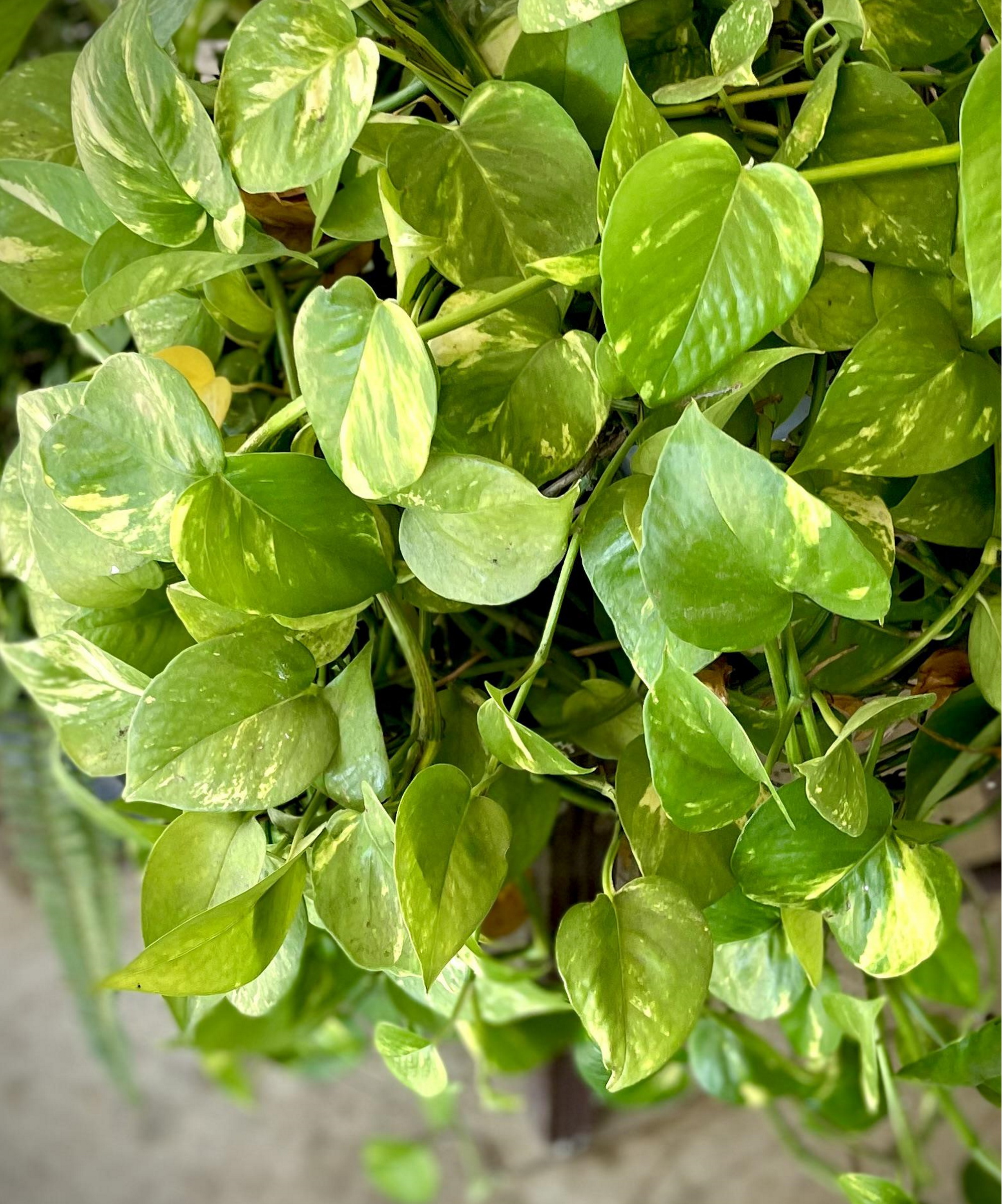
This is another popular choice, and one many start out with when first exploring variegated pothos plants. Golden pothos earned its name from it yellow patterned leaves, and they're native to the Solomon Islands, Indonesia and Southeast Asia.
'This is the OG of pothos and the one most commonly found to purchase,' says Lisa Eldred Steinkopf from the Houseplant Guru. 'It is known for tolerating low light, but will lose its variegation if it doesn’t have enough light,' she adds.
You should also keep golden pothos plants evenly moist. Doing so will ensure they keep on growing, eventually reaching an ultimate length of eight feet on average when grown indoors.
Insufficient light levels, a lack of humidity and poor soil quality can turn your golden pothos yellow. Use this plant mister from Amazon to increase humidity for your indoor plants.

Lisa is a houseplant expert who runs her blog The Houseplant Guru with over a decade of professional experience at Steinkopf Nursery and Garden Center in Michigan. As a child, Lisa helped her grandma tend to African violets and other houseplants. Since then, Lisa has forged a career providing houseplant advice, holding lectures and writing for publications across the US.
7. Cebu Blue Pothos
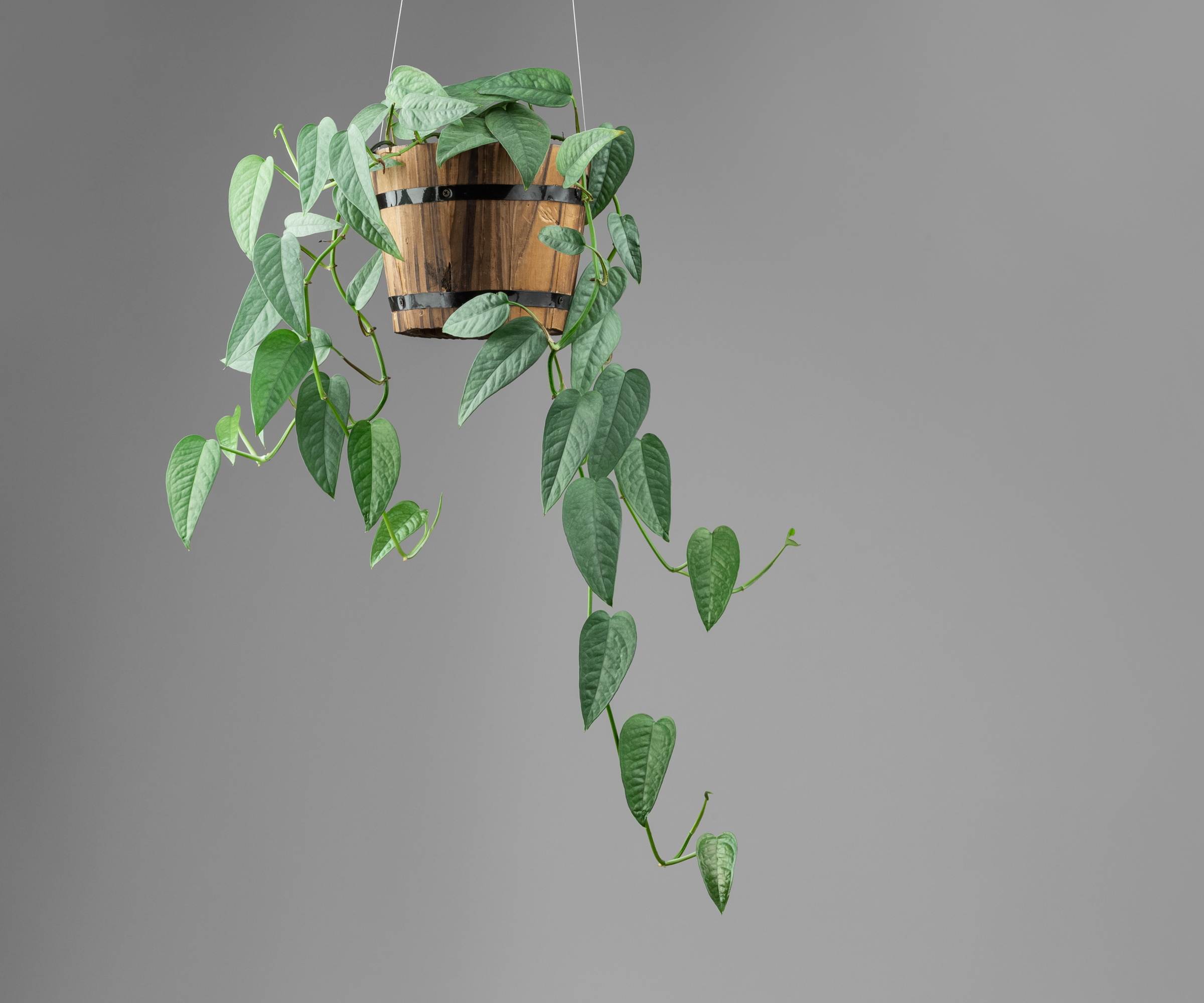
You might be surprised to hear there's a whole range of blue houseplants available, which are proven to create a calm feeling in your home. Well, the cebu blue pothos is no different. This unique variety shows off blue-green foliage that is sure to be a talking point among your guests.
'It displays its best color in lower light situations. If you put it in too high light, it may burn and lose its unique coloring,' says Lisa. 'If grown on a pole or support of some kind, it may even show its fenestrations,' she adds.
It can be grown as a trailer or a climber, as Lisa, notes, and should be kept somewhere out of direct sunlight to make the most of its unusual hue. Grow it with good drainage to allow excess water to drain away, otherwise your cebu blue pothos may wilt and discolor.
These pothos plants also thrive best in higher humidity levels, thanks to their native habitat of the Philippines. Investing in a humidifier, like this one from Amazon, can be well worth it to keep these unique houseplants happy.
Find these unusual houseplants online, like this cebu blue pothos from Walmart.
FAQs
Can you grow multiple types of pothos in the same pot?
Yes, it is absolutely fine to grow multiple types of pothos in the same pot. Although different varieties will have slightly different care requirements, all pothos plants tend to thrive in similar conditions of bright, indirect light and consistent moisture levels. Growing multiple pothos plants together can really show off their unique variegations and turn your houseplants into art.
While you take in the beauty of these reliable houseplants, don't forget to keep on top of essential care. This includes repotting your pothos plants as they grow too big for their current containers. Failing to do so could result in them becoming pot-bound, impacting their growth.

Tenielle is a Gardens Content Editor at Homes & Gardens. She holds a qualification in MA Magazine Journalism and has over six years of journalistic experience. Before coming to Homes & Gardens, Tenielle was in the editorial department at the Royal Horticultural Society and worked on The Garden magazine. As our in-house houseplant expert, Tenielle writes on a range of solutions to houseplant problems, as well as other 'how to' guides, inspiring garden projects, and the latest gardening news. When she isn't writing, Tenielle can be found propagating her ever-growing collection of indoor plants, helping others overcome common houseplant pests and diseases, volunteering at a local gardening club, and attending gardening workshops, like a composting masterclass.
